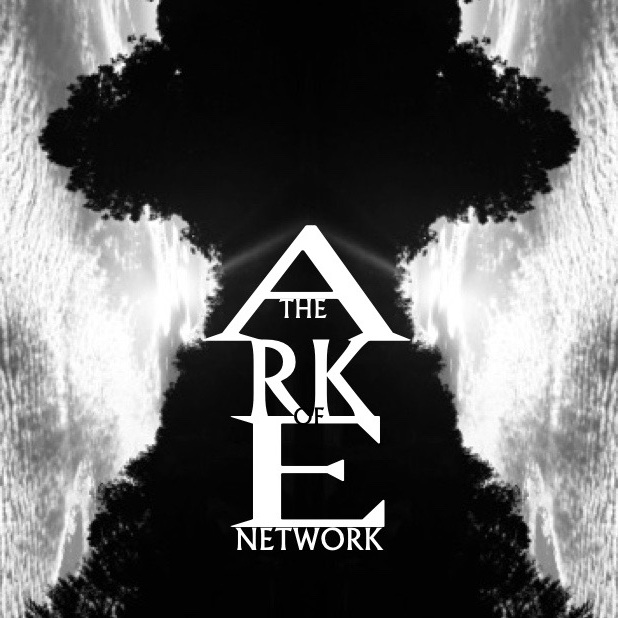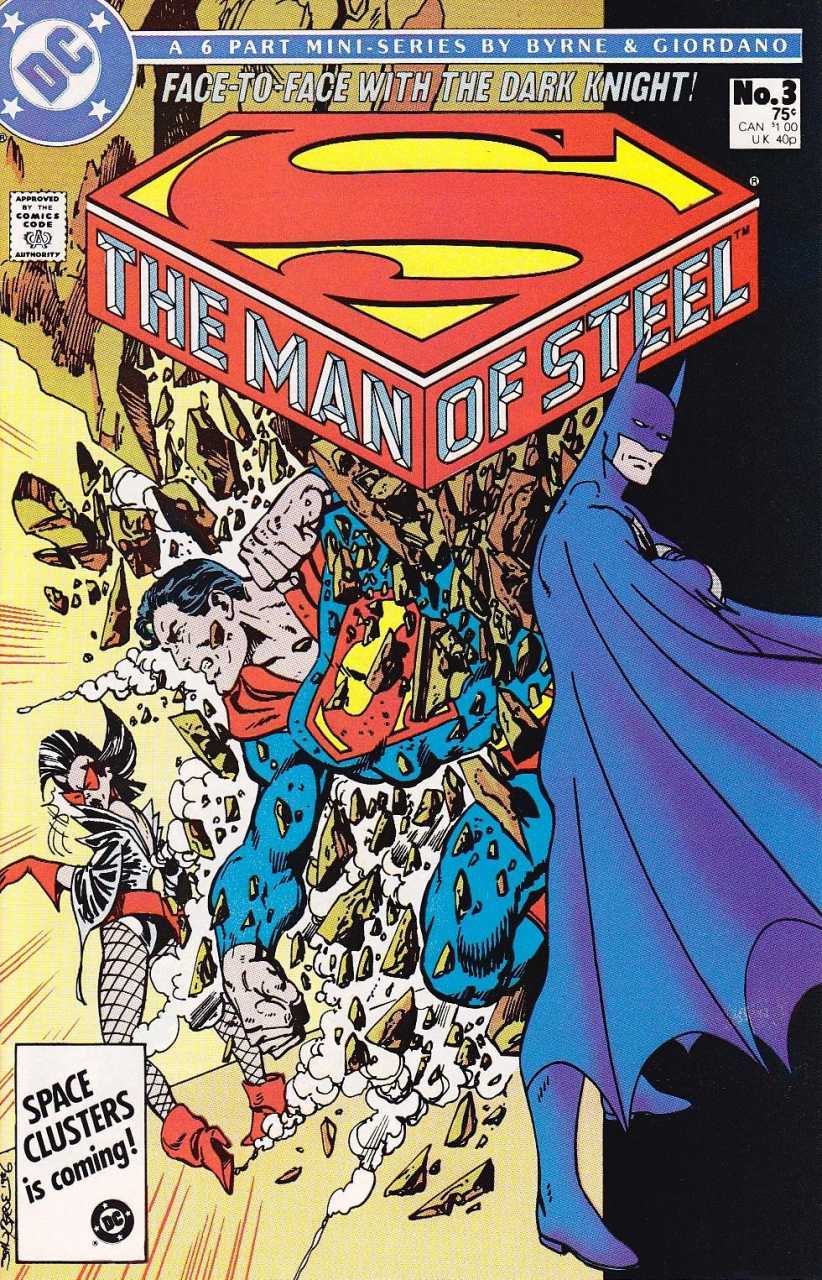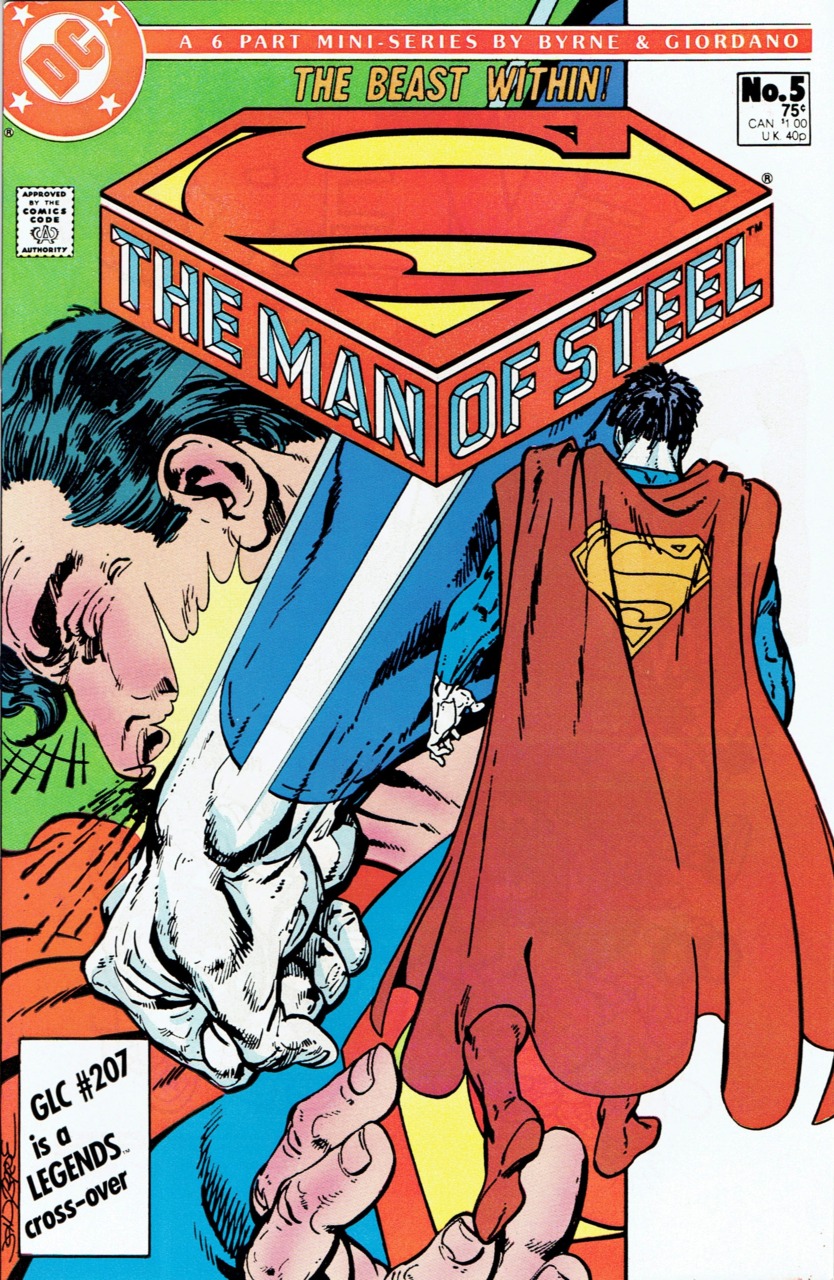From the Long Box - The Man of Steel
From the Long Box
Presents
The Man of Steel
The Four Color Ark was launched as the home of our growing library of comics related content, there’s just one problem. With all our comics related content, the one thing we aren’t presenting to you at this moment is content directly about comic books.
That changes right now with the first edition of our irregular column: From the Long Box where we will discuss back issues, long forgotten classics and maybe some of the truly foundational pieces of the four color hierarchy. In our first issue we’re going to look back at one of my favorite comics mini-series: John Byrne’s 1986 re-imagining of Superman’s origin in the six issue long Man of Steel.
I know, I know… “Why does it always have to be Superman?” I make no bones about the fact that I am a Superman fan, and I feel that he is the most important character in comics history. With that bias freely acknowledged I will further clarify that the Byrne version of Superman is the first version of Superman I ever read in any meaningful way. That said, I promise we’ll get to some Marvel stuff soon.
In a future installment, we will tackle the complexity of DC’s 1985 company crossover Crisis on Infinite Earths that destroyed the DC Multiverse and created one unified continuity moving forward. The shortest possible explanation is that the old continuity ended and the entire DC Universe rebooted itself from scratch (more or less.) The flagship character of Superman needed a bit of a facelift for the modern age, and former X-Men/Fantastic Four artist John Byrne was hired to deliver a new more streamlined version of the Man of Steel. Byrne’s first major change to the character is a drastic shift in focus away from the Kryptonian heritage of Kal-El and the powers of Superman and toward the beating heart of Clark Kent.
The reimagined Krypton is a cold place where science and logic have ruled for generations and there is very little human emotion left, think Star Trek’s Vulcans if they were even more standoffish. Knowing that their planet is doomed the scientist Jor-El takes the genetically engineered fetus made of his DNA and that of Lara Lor-Van, his mate, and places it into a birthing matrix that he installs in his experimental starship. This eugenically created version of Kal-El comes to term in the birthing matrix and does not reach full term until his ship crashes in Smallville – now officially located in Kansas. Where Jor-El and Lara are cold and calculating, scientists trying to preserve their species, Jonathan and Martha Kent are warm and caring farmers just trying to do right by the infant they found in a crashed spaceship. The Kents had been trying unsuccessfully to have a child of their own and here was a newborn baby, so they adopted Clark and raised him to believe he was their natural born child. There are simply no greater parents in comic book history than Byrne’s version of the Kents. They are compassionate and loving parents who raise Clark with a strong moral compass and a desire to help his fellow man.
Byrne’s next big change to Superman’s origin is that Clark’s powers don’t emerge right away, in this version Superman gains his powers by virtue of his Kryptonian cells being charged by the radiation of Earth’s yellow sun – but in his youth, he is effectively an empty battery that is charging for the first time. This allows young Clark the chance to have felt what it is like to be a normal kid, something the Silver Age version of the character never had. The older incarnation of the character was aware of his alien heritage and spent his entire life hiding his powers, and did not get to experience a “normal life” until he became Superboy. Byrne’s Clark never becomes Superboy, and the formative lessons about leadership and friendship that Silver Age Superboy learned from working with the Legion, Clark learned from being on the football team and spending time with Lana Lang and Pete Ross. We learn that he didn’t start developing his powers until he was about 12 years old and they didn’t all arrive at once. Once he does have all of the classic powers, we also notice very quickly that this Superman is less powerful than the version he has replaced. The Silver Age Metropolis Marvel could juggle planets, our Clark Kent is nowhere near that powerful.
Clark has grown into a young man, and still hasn’t started wearing a cape. In older versions, this meant that tragedy was about to strike in the form of the death of Jonathan Kent, a tragedy that Byrne flatly ignores. Clark doesn’t leave Kansas because he has lost his father figure, or because he wants to seek his Kryptonian origin in a weird ice castle. Clark leaves Kansas because he wants to get out into the world and start helping people, but not necessarily as a costumed hero. Byrne’s Clark is a journalist before he puts on tights, being a reporter isn’t a cover ID for Clark – it is his chosen profession. Writing for small papers and filing wire reports from all corners of the globe, Clark Kent travels to places where a good reporter is needed and where he can he intervenes with his powers. If people get too close to figuring out his secret he just moves on to the next town and the next paper that will hire him. It’s a good strategy that keeps Clark’s powers a secret until he comes to Metropolis where the prototype of the experimental space plane fails on its launch and is hurtling to the ground with no hope of salvation for the crew on board. Without hesitation, and still lacking a super suit, Clark leaps into the air catches the vessel and lands it safely. As the crew exits the vessel, reporters and onlookers crowd around the amazing savior. Genuinely freaked out by the crowd, Clark leaps into the air and flies home to the safety of Smallville and the advice of his parents. The Kents know there is no way to put the genie back into the bottle, so they help Clark move forward in a way that will allow him to keep his heroic identity separate from his normal life. Clark throws on an old pair of Jonathan’s glasses and adjusts his height so people won’t confuse Clark Kent with the hero who saved the plane, but the real work is happening in Martha Kent’s sewing room where she is constructing the first Superman costume. Gone is the conceit that the suit is from Krypton, or made from baby blankets that travelled in Clark’s ship: this iteration of the suit is designed from the ground up by Martha Kent as a brightly colored costume made of normal materials that she feels will help people to trust Clark.
Lois Lane wrote the very first article about the events of the space plane rescue and was then tasked with getting an exclusive article about the so-called Superman. Lois notices that Superman is always out saving people in Metropolis when they get into life-threatening accidents, so she drives her car off a bridge and sure enough is rescued by Superman. The tenacious Lois Lane gets her interview with Superman, even though he reveals he knows it was a set up, and immediately begins writing it up to turn into Perry White. She races to The Daily Planet with her interview in hand and gets to Perry’s office where she is told that she has been scooped and the very first interview with Superman had already been turned in by The Planet’s newest reporter: Clark Kent. This one subtle change changes the Lois/Clark/Superman dynamic immensely. Rather that pining away for Superman and barely noticing Clark, getting scooped creates a dynamic where Superman is an object to be sought and Clark as a charming rival who gets under her skin but still intrigues her. Byrne manages to with one slight change sow the seeds that will eventually blossom into Lois forming a romantic relationship not with Superman but with Clark Kent.
The status quo between Superman and Batman is also given a slight tweak that creates a unique new dynamic, rather than becoming instant best friends: Batman now doesn’t fully trust Superman because he’s an alien. Clark doesn’t fully trust Batman because of his methods. This shift in their attitudes toward each other creates a tension and mutual respect that colors their interactions to this day.
Lex Luthor is given a huge make-over in Byrne’s revised Metropolis. The Silver Age Lex Luthor was a brilliant scientist who was friends with Superboy until the Boy of Steel caused a lab accident that robbed Lex of his hair and made him the laughing stock of the scientific community. From that moment forward that mad genius Lex dedicated himself to destroying Superman. Of that classic origin two things carry over to Byrne’s revamped Lex: the name Lex Luthor and the fact that he is a genius level intellect. Byrne’s Lex Luthor has all his hair, has never met Clark Kent and has dedicated his extensive genius not to science but to conquering the business world. Lex is effectively the anti-Bruce Wayne, with business interests all over the world and shares of everything from cable news to genetics research laboratories. Possessed of a massive ego Lex erected the tallest building in Metropolis as the home of LexCorp so that everyone in Metropolis would look up and see him towering over them as their protector and benefactor. Feeling the same distrust of aliens as Bruce Wayne is a small part of the motivation for Lex’s hatred of Superman, the rest comes from the way Superman arrived and supplanted Lex as Metropolis’ favorite son and sainted protector which bruised the billionaire’s ego beyond measure. Lex decided that if he couldn’t regain his place as the most powerful man in Metropolis, he would find a way to control the most powerful man in Metropolis by having one of his research labs attempt to clone the Man of Steel so that Lex’s created Man of Tomorrow could murder and replace the real one. The clone eventually failed and became the creature comics fans know as Bizarro.
What works best about Byrne’s relaunch is that it is not presented as a single origin story that puts everything on the table at once, Byrne gives us six vignettes that focus on introducing us to the new version of each aspect of the revised mythology. The first issue provides us with our look at Clark himself, the version of Krypton that birthed him, and the Kent family from where he draws his core values. The second issue provides us a detailed look at Lois Lane as the intrepid reporter we know her to be, and sets the stage for her relationship with Clark. The third issue shows us how the world at large, and Batman in particular, see the Man of Steel. The fourth issue introduces us to the new and in some ways far more dangerous Lex Luthor, while the fifth issue uses Lex and his Bizarro plot to introduce us to supporting players like Jimmy Olsen, Perry White, and Lucy Lane. The sixth and final issue rounds out the series by introducing Clark to his Kryptonian origins. Clark has already become Superman and still doesn’t know he isn’t human – but his rocket plays a recording that shows him Jor-El and Lara and informs him that he is Kal-El: Krypton’s only survivor.
Byrne’s Superman is a grounded, human version of the character who is much more Man than Super. It is Byrne’s version of the character who will die fighting Doomsday and return to life to marry Lois Lane. Byrne’s Man of Steel serves as the inspiration for the version of the character we see both on the WB’s long running Smallville TV Series as well as in the film Man of Steel. When the next company wide reboot introduces a Superman that doesn’t quite work, it is Byrne’s Superman that they will return to and it is Byrne’s Superman who is currently being published. The injection of the humanity of Clark Kent gives this version of the character a gravitas that the earlier incarnations lacked, it makes him one of us instead of above us and it makes audiences want to stand beside him just as he would stand in front of us.
Send Feedback: dirtypoolfilms@gmail.com
Follow more from The Ark of E: On Instagram @thearkofenetwork
...on Twitter @thearkofe
-
No better time than now to join us as we talk about all things @whywithaqmark! #WhenTheSunSetsEast… https://t.co/nQJP2rD4vQ
-
#Frozen2 already has 4 new songs and takes Anna and Elsa far out of Arendelle. #TheMovieArk https://t.co/hpR0exX6w3 https://t.co/tnKMSz9l5j
-
RT @Mr_Sun_Shine: One taught me love One taught me patience One taught me pain. #DearZachary https://t.co/n3s7gEkWFt
-
Join us as we deep dive into the films of #RobertRodriguez on #TheMovieArk https://t.co/Vgt70qgs2J https://t.co/tKxzGFsMsV
-
If you haven't checked out our @BenFolds podcast, #LostInTheFolds, now is the time! #TheMusicArk… https://t.co/VLABXEYmm8
-
We've had a lot of episodes recently related to #HorrorMovie franchises. Check them all out on #TheMovieArk… https://t.co/81DfoccQZD
-
We've got exclusive content on our @Patreon site. For as little as $1, you can have access to it all! #WhatADeal… https://t.co/5rFBba4gyd
-
You can now hold the Entire Run of Carpenter Revisited in your hands Exclusively on our Our Patreon! For the Low Pr… https://t.co/37wSspsDfx
-
In case you missed it...For our last surprise of October @starlordbro and I recorded the 1st Ever ARKTOBER EDITION… https://t.co/vzUMhrZ7BR
...and on Facebook at The Ark of E
























